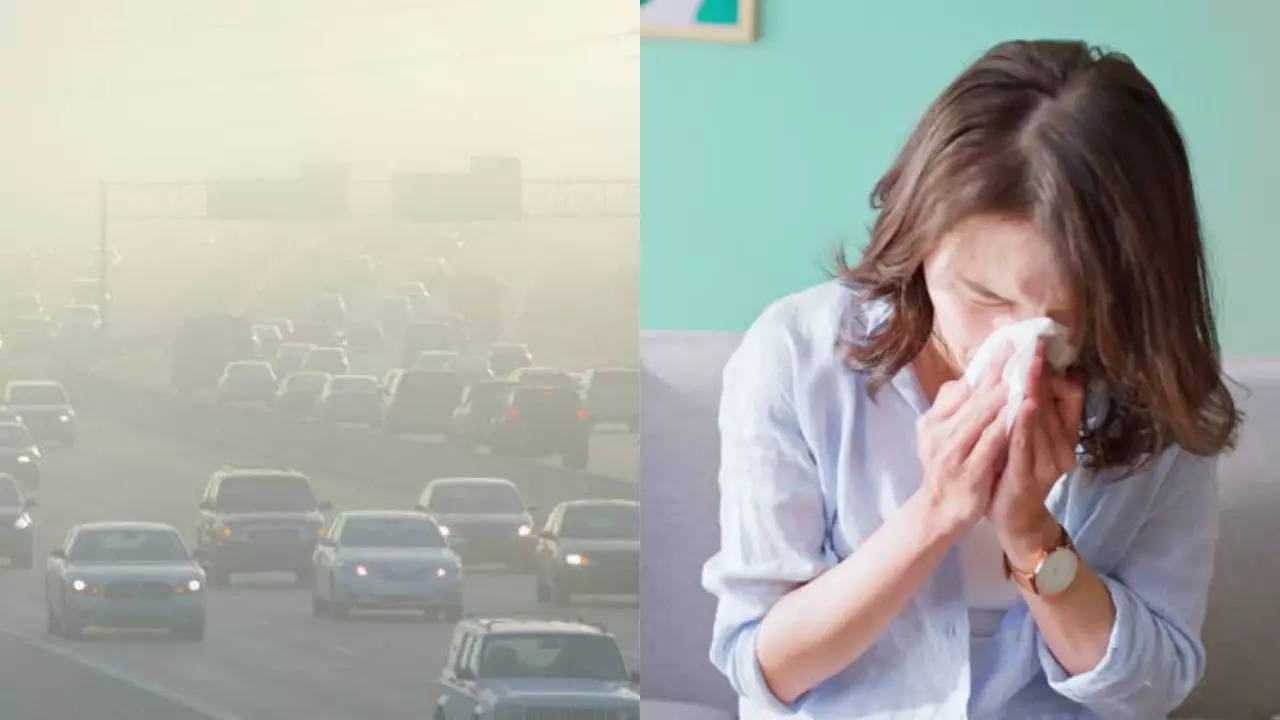-
news
-
Health
Smog and cold: Delhiites need to be careful due to allergies
Delhi’s toxic air quality has worsened due to smog and cold weather, increasing the risk of respiratory and allergy problems, especially for children, the elderly and those with co-morbidities. When PM2.5 levels exceed safe limits, residents should monitor AQI, wear masks and use air purifiers to reduce exposure to life-threatening pollutants and allergies.

Smog and cold: Delhiites need to be careful due to allergies (Image credit: iStock)
A thick layer of smog has engulfed parts of Delhi, Noida, Gurugram and the wider National Capital Region (NCR), increasing the risk of respiratory and allergy problems. Of the 36 monitoring stations in Delhi, 20 recorded air quality in the ‘severe’ category till 8 am. The toxic air can be life-threatening for vulnerable groups including children, the elderly and people with pre-existing respiratory or cardiovascular problems.
Effect of smog and cold on allergies
The combination of toxic fumes and cold winter air creates an environment full of allergy triggers. Dense smoke filled with harmful pollutants like PM2.5, nitrogen oxides and carbon monoxide irritates the respiratory system and weakens the body’s ability to fight allergies. Additionally, cold air amplifies these effects, increasing allergy-related health problems.
Major allergy trigger for Delhi residents
– PM2.5 and PM10:
Particulate matter, especially PM2.5, is a major trigger for respiratory allergies. These particles irritate the nasal passages and airways, causing sneezing, wheezing and congestion. Prolonged exposure can lead to chronic conditions such as asthma and bronchitis.
– Pollen and dust particles:
While pollen levels are lower in winter, indoor allergens such as dust mites become important triggers as people spend more time indoors with closed windows and less ventilation.
– Fungal spores:
The humid conditions caused by fog and dew create an ideal environment for fungal growth, causing allergies in sensitive individuals.
– Cold wind:
Breathing cold air can irritate the nasal passages, causing a runny nose, sneezing, or even cold-induced asthma.
– indoor air pollution:
Increased use of heaters, incense sticks and cooking stoves during the winter months can worsen indoor air quality, increasing allergies.
A 2023 report by the Center for Science and Environment (CSE) found that PM2.5 levels in Delhi often exceed 8-10 times the safe limits during winter, significantly increasing the incidence of respiratory allergies. Cold air coupled with pollution is a major trigger for allergic rhinitis, which affects about 30 percent of the urban population. According to the World Health Organization (WHO), chronic exposure to smog can cause systemic inflammation, weaken immunity and aggravate pre-existing allergies.
Symptoms to be aware of
Common symptoms caused by smog and cold-related allergy triggers include:
– Constant sneezing and nasal congestion
– Itching or watering of eyes
– dry or irritated throat
– difficulty breathing
– Chest tightness and wheezing
– Fatigue and general malaise
If these symptoms persist or worsen, especially in children or people with pre-existing health conditions, it is advisable to seek medical help.
Who is at risk?
Some groups are more sensitive to these triggers:
– Children and infants: Their developing respiratory systems are more sensitive to damage from pollutants.
– Elderly people: People above 60 years of age have a weak immune system, which increases the risk of allergies.
– Asthma and COPD patients: Pre-existing respiratory conditions make exposure to smog and cold particularly dangerous.
– Outdoor workers: People who are outside for long periods of time are directly exposed to high pollution levels.
preventive measures
Delhiites can take immediate steps to protect themselves:
– Monitor AQI: Keep an eye on daily air quality reports and avoid outdoor activities during severe pollution levels.
– Wear a protective mask: High-quality masks, such as an N95 or N99, can filter out particles.
– Use an air purifier: Invest in a HEPA-filter air purifier for indoor spaces to reduce the risk of allergies.
– Improve ventilation: Open windows during the afternoon when pollution levels are relatively low and clean the ventilation system regularly.
– Boost immunity: Include antioxidant-rich foods, such as citrus fruits and green leafy vegetables, to strengthen your body’s defenses.
– Maintain cleanliness: Dust and vacuum regularly to reduce indoor allergens such as dust mites and mold.
– Stay hydrated: Drinking warm fluids can help soothe irritated airways and flush out toxins.
Get the latest news live on Times Now with breaking news and top headlines from around the world.


